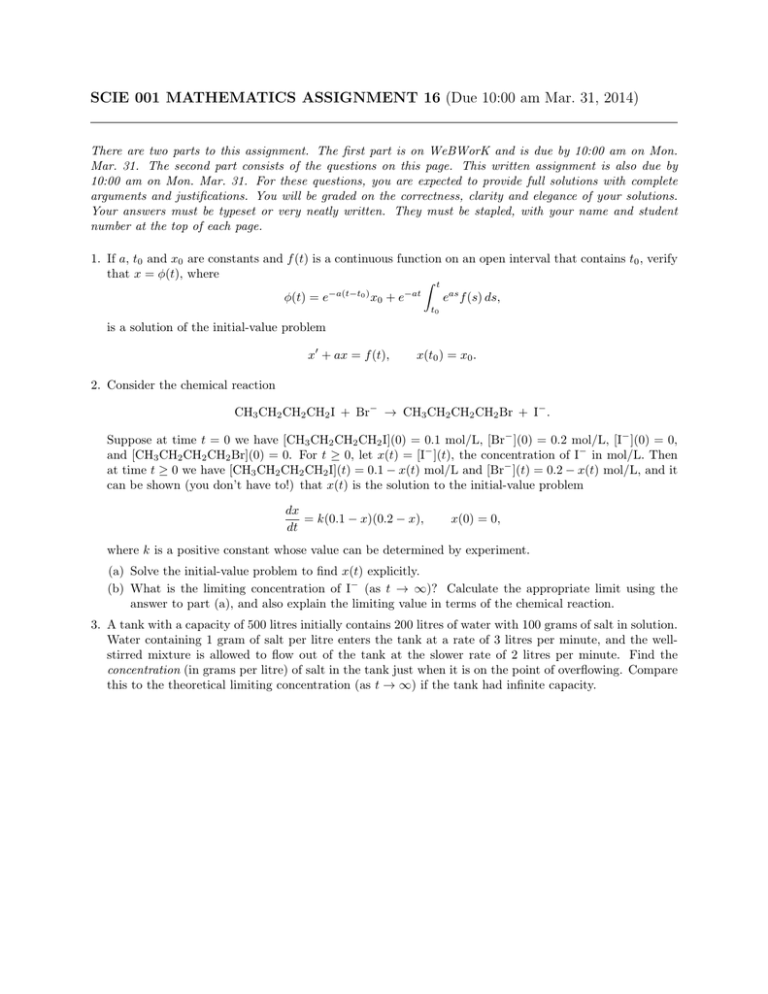SCIE 001 MATHEMATICS ASSIGNMENT 16 (Due 10:00 am Mar. 31,...
advertisement

SCIE 001 MATHEMATICS ASSIGNMENT 16 (Due 10:00 am Mar. 31, 2014) There are two parts to this assignment. The first part is on WeBWorK and is due by 10:00 am on Mon. Mar. 31. The second part consists of the questions on this page. This written assignment is also due by 10:00 am on Mon. Mar. 31. For these questions, you are expected to provide full solutions with complete arguments and justifications. You will be graded on the correctness, clarity and elegance of your solutions. Your answers must be typeset or very neatly written. They must be stapled, with your name and student number at the top of each page. 1. If a, t0 and x0 are constants and f (t) is a continuous function on an open interval that contains t0 , verify that x = φ(t), where Z t −a(t−t0 ) −at φ(t) = e eas f (s) ds, x0 + e t0 is a solution of the initial-value problem x0 + ax = f (t), x(t0 ) = x0 . 2. Consider the chemical reaction CH3 CH2 CH2 CH2 I + Br− → CH3 CH2 CH2 CH2 Br + I− . Suppose at time t = 0 we have [CH3 CH2 CH2 CH2 I](0) = 0.1 mol/L, [Br− ](0) = 0.2 mol/L, [I− ](0) = 0, and [CH3 CH2 CH2 CH2 Br](0) = 0. For t ≥ 0, let x(t) = [I− ](t), the concentration of I− in mol/L. Then at time t ≥ 0 we have [CH3 CH2 CH2 CH2 I](t) = 0.1 − x(t) mol/L and [Br− ](t) = 0.2 − x(t) mol/L, and it can be shown (you don’t have to!) that x(t) is the solution to the initial-value problem dx = k(0.1 − x)(0.2 − x), dt x(0) = 0, where k is a positive constant whose value can be determined by experiment. (a) Solve the initial-value problem to find x(t) explicitly. (b) What is the limiting concentration of I− (as t → ∞)? Calculate the appropriate limit using the answer to part (a), and also explain the limiting value in terms of the chemical reaction. 3. A tank with a capacity of 500 litres initially contains 200 litres of water with 100 grams of salt in solution. Water containing 1 gram of salt per litre enters the tank at a rate of 3 litres per minute, and the wellstirred mixture is allowed to flow out of the tank at the slower rate of 2 litres per minute. Find the concentration (in grams per litre) of salt in the tank just when it is on the point of overflowing. Compare this to the theoretical limiting concentration (as t → ∞) if the tank had infinite capacity.






